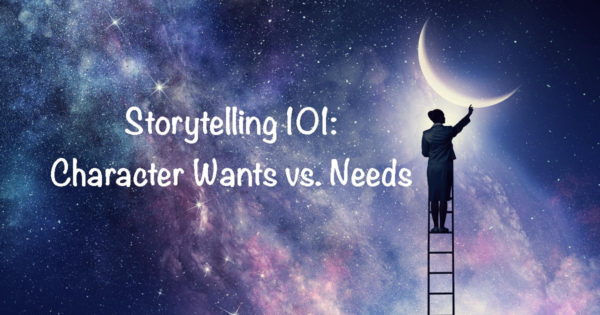 A few weeks ago I attended a national writing conference and listened to a fascinating discussion about character and plot from the perspective of screenwriters.
A few weeks ago I attended a national writing conference and listened to a fascinating discussion about character and plot from the perspective of screenwriters.
Structure is so important to screenwriters, probably more than it is to prose writers. But, in my opinion, it’s smart for all writers to connect with some of the methods screenwriters use to structure their stories.
They see character and plot as one. A plot comes from everything that happens to a character, what he or she faces on the path to getting what they want.
Writers should try to map out what their characters want vs. what they actually need. It’s a simplistic exercise but can improve overall character development and plot.
What Does Your Character Want?
All of us have things we want: a new car, a raise at work, or a significant other. The same goes for characters.
It’s important to identify what a character wants early on to show what makes them tick. Otherwise, you may be stuck with a flat or dull character. Don’t forget characters are how people connect with the story. Plot is just a vehicle for their journey.
So here’s the secret to a great story. Find out what your characters want and put a bunch of barriers in their way. That’s the rising action.
Once you know what they want, you have to demonstrate it early on so the reader or viewer understands why they are doing what they’re doing. This also bestows the character with action and purpose.
And because screenwriters see character development and plot as interconnected, an interesting character with an actionable purpose will always make a better story.
What Does Your Character Need?
Now here’s when things get really interesting. You’ve spent the entire story describing what your character wants, yet that’s not what they’re going to get. Or it’s not what they should be getting.
Like the Rolling Stones’ song, “You can’t always get what you want, but if you try sometimes, well, you might find, you get what you need.”
Often what any of us wants in life isn’t what we really need.
It’s the job of the storyteller to give the character what they need. Even if a male protagonist wants to date the prom queen or a female protagonist wants to score the job of her dreams, it may not be what they need in life.
The trick is showing this through a character arc. As a character fails at trying to get what they want, they start to reflect on their histories, beliefs, or backgrounds. A growth occurs and the character should reach a point where they realize they didn’t need what they always wanted.
A guy trying to date the prom queen, for instance, could realize his best friend was the love of his life all along. Or the lady wanting the corporate job decides she’s just as happy selling jam at the local farmer’s market.
Figure Out Character Wants/Needs
As I said above, this is a simplistic view of building a character but it’s absolutely effective to make sure they’re interesting and moving forward in the story.
The wants/needs strategy is versatile. It can be used for all characters, as well as any desire you can think of. What a character is seeking can be internal or external, and something they understand consciously or unconsciously. There are no limits to what you can brainstorm.
The two key components of a good story, regardless of genre, are that the character evolves in some way and that they’re given what they truly need versus what they superficially want.
Even if you’re not writing screenplays (I write novels, for example) you can certainly use these principles to craft the best story possible.

Shutta Crum
Good points! Thanks.
Lee Gramling
A useful tool if you don’t get carried away with it. I was first introduced to it in Acting 101. It’s important to remember, though, that most people don’t KNOW what they want — so while it’s worthwhile for the author or actor to know this, his or her character may have no clue. Also, wants may change over the course of a novel. Movies are really a short form of fiction (think 20-30,000 words) and what screenwriters call the “arc” of a character usually tends to be straight line and more or less simplistic.
Iris Zerba
Good insight.